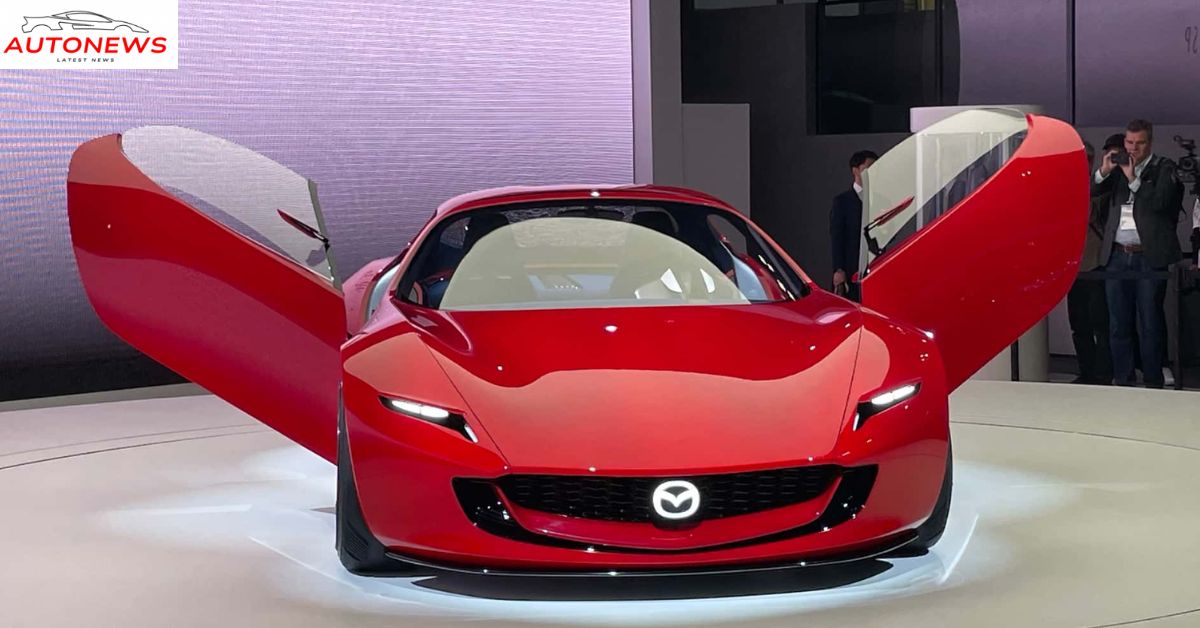Mazda’s Iconic SP concept has captured the imagination of automotive enthusiasts around the globe—and for good reason. With the promise of a production-ready, rotary‑powered sports car soon to complement (not replace) the legendary Miata, Mazda seems poised to reestablish itself as a maker of true enthusiast machines. Here’s everything fans need to know about this next‑gen “Joy Machine” — and why its arrival could be a watershed moment in Mazda’s heritage.
The Concept That Became Reality
Unveiled in October 2023 at the Japan Mobility Show, the Mazda Iconic SP stunned audiences with its sculptural, Ferrari‑inspired body, twin‑rotor rotary‑hybrid powertrain, and homage to the FD RX‑7’s styling—including pop‑up headlights and circular taillights. Initially assumed to be a fleeting design exercise, industry insiders quickly learned this was not just a show car: top executives confirmed it’s intended for production in a “not‑so‑distant future”.
Title: A “True RX Successor”?
Internally referred to as a spiritual RX‑7 follow‑up—possibly even RX‑9—Mazda design chief Masashi Nakayama praised the Iconic SP as a “good successor for RX‑7,” although final naming decisions are still pending. He did confirm that the Cosmo name is almost certainly out of the question. Regardless of badges, it’s clear Mazda envisions a halo sports car that elevates the brand.
Size & Design: Bigger, Lower, Sleeker
Although some thought the concept might be downsized to MX‑5 proportions, the production version will remain significantly larger. The concept measures ~164.5 in long and ~72.8 in wide—with a 102‑in wheelbase—making it over 10 in longer and nearly 5 in wider than the ND Miata, yet ~3 in lower, with a weight around 3,197 lb and a near-perfect 50:50 balance. These proportions help deliver athletic presence and driver confidence while preserving a lightweight ethos.
Expect many visual cues from the concept to carry through to production: sleek Coke‑bottle sides, flowing fenders, sculpted rear haunches, and minimal exterior detailing. Pop‑up headlights, while a nod to the RX‑7, may be excluded for cost and crash compliance reasons.
Powertrain: A Hybrid Rotary with a Twist
At the heart of the SP lies Mazda’s next‑generation twin‑rotor rotary engine, working in concert with electric motors. Initially, the rotary serves as a range‑extender generator, producing approximately 365 hp, while the electric motors drive the rear wheels—though sources say Mazda is also exploring a drivetrain where the rotary engine powers the wheels directly, providing a more analog experience.
This represents a significant evolution from the MX‑30 R‑EV’s single‑rotor setup, offering cleaner emissions compliance and a more powerful hybrid layout. The rotary unit is flexible, capable of using gasoline, hydrogen, or carbon‑neutral fuels.
Mazda CEO Masahiro Moro confirmed the creation of a dedicated Rotary Engine Development Group in early 2025, signaling the brand’s renewed commitment to innovate this signature powertrain in a performance context, rather than just auxiliary function.
Driving Dynamics & Design Inside
Inside, the cabin is purposefully minimalist, with a compact digital display, shift‑paddles for brake regen control, lap timer, and g‑meter—evoking track focus. The design philosophy stays true to Mazda’s sports DNA, with materials that blend sustainability and refinement: plant‑based bio‑fabric, recycled oyster‑shell trim, brushed aluminum, and indigo‑dyed denim‑like textiles.
Enthusiasts on Reddit also note that Mazda’s interior layout aligns with the RX‑7’s classic simplicity and driver orientation: “driver‑centric,” “minimalistic and reminiscent of the FD RX‑7,” with a “Ferrari‑style gated shifter” aesthetic.
Timeline, Positioning & Pricing
With the rotary powertrain nearing maturity, Mazda is targeting a launch as early as late 2026 or early 2027, dependent on engineering, emissions, and economic feasibility. It will slot well above the Miata in price and stature—analysts expect a base price north of $50,000, possibly even exceeding $60,000 given premium execution and low-volume production.
Mazda envisions the sports car lineup in tiers: the MX‑5 remains the lightweight, affordable roadster rooted in traditional ICE, while the new rotary coupe serves as the premium halo model embodying future electrified sports car ideals.
What Fans Are Saying
On Reddit, the response to the Iconic SP concept has been overwhelmingly positive, with praise for its design and possible execution. Comments highlight the balanced weight distribution, “slick hybrid rotary,” and emotional appeal:
“Weighing in at 3,197 pounds… with weight evenly distributed front and rear…”
“Design wise the Iconic SP is very sleek and Ferrari like… the little pop up headlights is a really nice touch.”
Some caution remains around rotary reliability, though the range‑extender application implies steady RPM operation, which may mitigate traditional issues like carbon buildup.
Why It Matters: Mazda’s Brand Resurrection?
The Iconic SP-G-based coupe signals Mazda’s commitment to preserving what makes it unique: the rotary engine, a focus on driver‑first design, and emotional connection. As Mazda invests heavily in electrification, this vehicle bridges the gap between future compliance and past enthusiasm—an electrified sports car that feels alive.
By pairing a compact rotary powerplant with electric drive, Mazda is attempting to redefine hybrid performance on its own terms, with personality and agility rather than numb commodity.
In Summary
Mazda’s next-gen rotary sports car—derived from the sensational Iconic SP concept—is shaping up to be a modern classic in the making:
- Larger and more sculpted than the Miata, with unique proportions and modern Kodo design.
- Twin‑rotor rotary hybrid, generating over 350 hp and possibly driving the rear wheels directly.
- Driver-centric cockpit with minimalist controls, regenerative paddle shifters and a focus on engagement.
- Positioned as a premium halo coupe, expected in the $50–60K range, launching around 2026–2027.
- A symbol of Mazda’s rebirth, resuscitating rotary heritage while embracing new fuels and hybrid technology.

